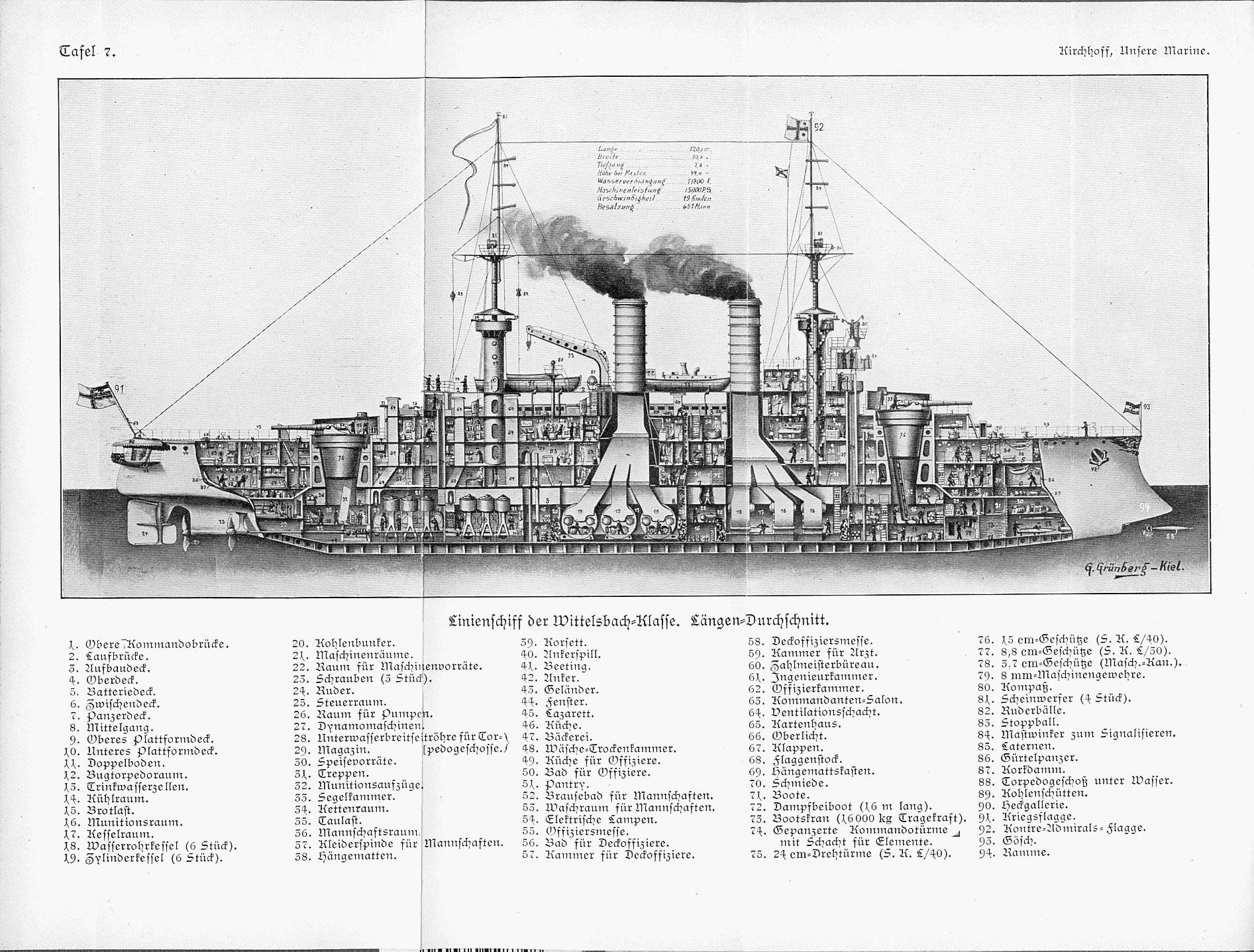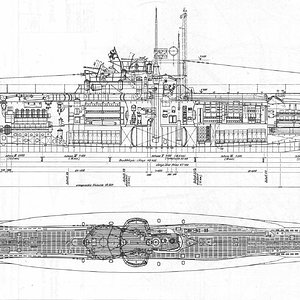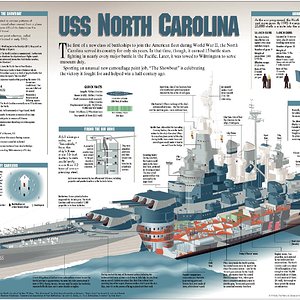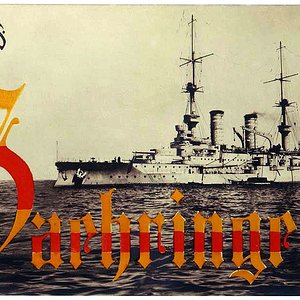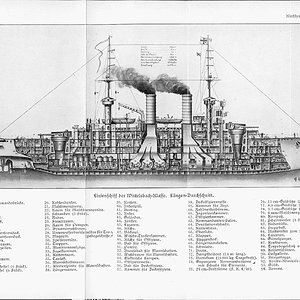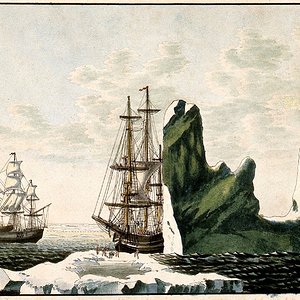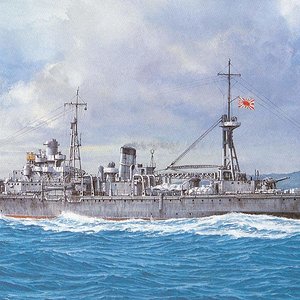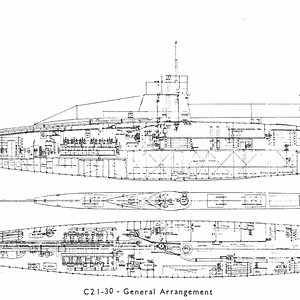Navigation
Install the app
How to install the app on iOS
Follow along with the video below to see how to install our site as a web app on your home screen.
Note: This feature may not be available in some browsers.
More options
You are using an out of date browser. It may not display this or other websites correctly.
You should upgrade or use an alternative browser.
You should upgrade or use an alternative browser.
First fruit of the 1898 Navy Law: the name ship Wittelsbach on trials in 1900. A dramatic moment was beautifully captured on film. The vessel appears to have a minesweeping spar shipped at bow. At 18.1 kts, Mecklenburg was the speediest of the 5-ship class (Schwaben at 16.9 knots being the slowest). These were the first battleships commissioned after the 1898 Navy Law mandated the development of a powerful German navy. Entering service in 1900-01, they reflected an increased tempo of armaments building in the new century. Soon after, Tirpitz went to the Reichstag and demanded doubling of the already-increased budget: the previous class of five had taken a leisurely 4 years to construct, but build times would compress to 2½-3 years with the new money.
Improved Kaiser Friedrichs, the Wittelsbachs incorporated enhanced armor protection. Like the model, they featured low freeboard with the bow turret brought up onto the roof of a gunhouse bristling with 5.9" guns (to make up for their small calibre main weapons, they toted no less than 18 of their secondary guns, all in single casemate mounts.) The extra deck of clearance brought the bow 9.4" guns up to 30 feet above the water's surface in calm conditions. The secondary battery mounting was changed from the mostly-turret mounting in the Kaier Friedrichs. Most of the numerous 5.9" guns were carried in casemates in the central redoubt, but there were four singles mounted in small cylindrical turrets, two to each side at the top of the sided armament pyramid, as seen in the schematic and photos.
As for main armament, the class continued the Krupp high-velocity 9.4"/40 cal. guns used in the Kaiser Friedrich III class, and thus were considered second-class battleships, inferior to their 12-inch-armed French, British, and Russian counterparts.
The design made clever use of cutouts in the hull, giving them a bit of the tumble-home look of the Borodino class, with its full beam only extending only one deck above the waterline, a nearly-vertical walled gunhouse rising on the inboard side, and a narrow, wet deck between the two verticals. As in the Kaiser class, the stern turret was sited one deck lower to the water than the bow turret, on a narrow quarterdeck running down the center section of the stern, stepped down to the cutout deck which carried the ship's fabric out to the outboard contours of the hull. Although the ships were a clear derivative from the preceding Kaisers, incremental improvements were made; as in the armor, also in the machinery. With an additional 1000 HP, the ships delivered a more dependable 18 knots. Fuel capacity was improved by 25%, and oil fuel capacity was doubled.
Still in commission at the beginning of WWI, these vessels were quickly relegated to harbor defense and later to more menial uses, some of them being hulked for utility ships and others becoming floating barracks for Germany's U-boat heroes. Of the five, Zähringen was spared by the Versailles Treaty and became a radio-controlled target ship for the remnant German navy (Reichsmarine) under the Weimar Republic. In this rôle she survived the Hitler régime and died with it at the end of the Second World War. On December 18, 1944, the old ship was hit by bombs during an air raid on Gdynia and sank in shallow water. The Nazi military authorities refloated and moved her to the harbor entrance, where she was sunk as a block ship on March 26, 1945. The wreck was raised and scrapped beginning in 1949, the rusty remnants of the last of the Wittelsbachs, half a century old. She had witnessed a time of mind-numbing change: the dreadnought arms race in its entirety, the First War, the collapse of the European dynastic system, depression, war again, and the birth of the Cold War. One can hardly blame her for wanting to crawl back into the blast furnace and start over.
Improved Kaiser Friedrichs, the Wittelsbachs incorporated enhanced armor protection. Like the model, they featured low freeboard with the bow turret brought up onto the roof of a gunhouse bristling with 5.9" guns (to make up for their small calibre main weapons, they toted no less than 18 of their secondary guns, all in single casemate mounts.) The extra deck of clearance brought the bow 9.4" guns up to 30 feet above the water's surface in calm conditions. The secondary battery mounting was changed from the mostly-turret mounting in the Kaier Friedrichs. Most of the numerous 5.9" guns were carried in casemates in the central redoubt, but there were four singles mounted in small cylindrical turrets, two to each side at the top of the sided armament pyramid, as seen in the schematic and photos.
As for main armament, the class continued the Krupp high-velocity 9.4"/40 cal. guns used in the Kaiser Friedrich III class, and thus were considered second-class battleships, inferior to their 12-inch-armed French, British, and Russian counterparts.
The design made clever use of cutouts in the hull, giving them a bit of the tumble-home look of the Borodino class, with its full beam only extending only one deck above the waterline, a nearly-vertical walled gunhouse rising on the inboard side, and a narrow, wet deck between the two verticals. As in the Kaiser class, the stern turret was sited one deck lower to the water than the bow turret, on a narrow quarterdeck running down the center section of the stern, stepped down to the cutout deck which carried the ship's fabric out to the outboard contours of the hull. Although the ships were a clear derivative from the preceding Kaisers, incremental improvements were made; as in the armor, also in the machinery. With an additional 1000 HP, the ships delivered a more dependable 18 knots. Fuel capacity was improved by 25%, and oil fuel capacity was doubled.
Still in commission at the beginning of WWI, these vessels were quickly relegated to harbor defense and later to more menial uses, some of them being hulked for utility ships and others becoming floating barracks for Germany's U-boat heroes. Of the five, Zähringen was spared by the Versailles Treaty and became a radio-controlled target ship for the remnant German navy (Reichsmarine) under the Weimar Republic. In this rôle she survived the Hitler régime and died with it at the end of the Second World War. On December 18, 1944, the old ship was hit by bombs during an air raid on Gdynia and sank in shallow water. The Nazi military authorities refloated and moved her to the harbor entrance, where she was sunk as a block ship on March 26, 1945. The wreck was raised and scrapped beginning in 1949, the rusty remnants of the last of the Wittelsbachs, half a century old. She had witnessed a time of mind-numbing change: the dreadnought arms race in its entirety, the First War, the collapse of the European dynastic system, depression, war again, and the birth of the Cold War. One can hardly blame her for wanting to crawl back into the blast furnace and start over.

